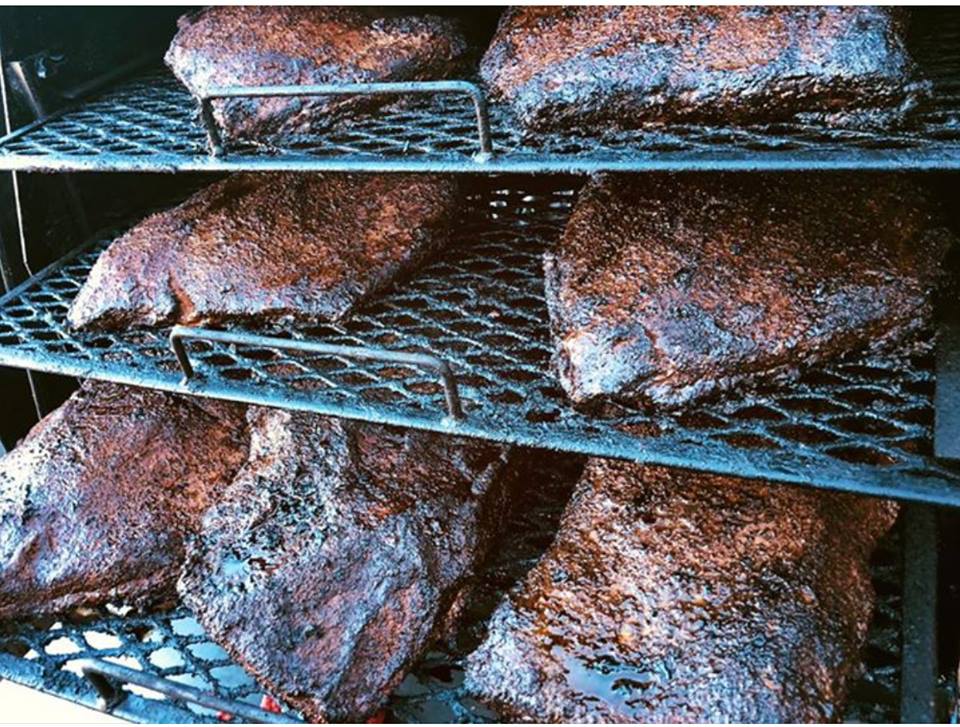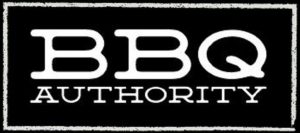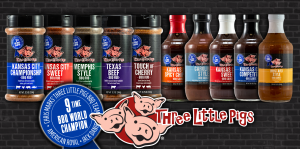A beef brisket is known as one of the toughest parts of a cow you can put on your smoker, though when prepared and cooked correctly it can be the best tasting and most tender meat you will ever eat. Here are 14 Frequently Asked Questions (FAQs) that will help you, prepare, and barbeque a beef brisket, Texas style, so you can impress your friends the next time you are cooking BBQ! Enjoy this BBQ Brisket Recipe.

- What temperature should I pull the brisket off the smoker?
Answer: Smoke Temp should be about 225-275. Take it to 165, foil it, take it to 205, pull it, let is rest in for 30 minutes, slice and that is about it. Or to even make it easier add about an hour to the cook and do not use foil and let the brisket smoke to 205.If you do all that, you will have the perfect brisket
- Why did my brisket turn out tough?
Answer: A brisket that is tender like that is pure gold for a smoker. The problem is that a brisket is one of the more challenging cuts of meat to smoke, If the brisket is tough, it is because it needs more time to cook to tenderize and break down the connective tissues, or the brisket is cut with the grain instead of against the grain. First Step Video on preparing a brisket to a guarantee tenderness.
- Why do you let a brisket rest?
Answer: The reason why you want to rest the brisket is that it allows the juices of the meat to thicken slightly. The degraded and dissolved proteins from the brisket’s juices will thicken ever so slightly, which slows down how fast the juice pours out of the meat when you first cut into the brisket.
- What makes a good bark on brisket?
Answer: Bark is the combination of the good BBQ rubs that you apply on your meat and the smoke from your smoker, combining with the meat protein in a chemical reaction with the charcoals and woods. Good bark on a brisket or pork butt will make the meat resemble a giant hunk of dark crusty meteor of flavor
- Do you smoke brisket fat side up or down?
Answer: If you decide to cook your brisket fat side up, you should know that the fat acts as a heat shield protecting the beef. If your heat source is mostly from the top, such as with many horizontal offset smokers, fat side up should be the way to go. It is a myth the brisket will self-marinade itself with the fat as it cooks, meat is not a sponge.
- When should you wrap a brisket?
Answer: When wrapping your brisket in foil or butcher paper, I recommend waiting until your meat hits 165 degrees Fahrenheit internally. This will help you build up a nice bark on the outside of the meat and give you that beautiful red smoke ring.
- What’s better point or flat brisket?
Answer: The point has more fat content, it is thicker, and some say a more flavorful cut. The point is the cut that “Burnt Ends “come from. The brisket is a tough cut of meat. Some prefer the point because it tends to be more tender and juicier after cooking. The flat or round cut is much leaner and is best sliced as thin slices and is tougher to smoke to correct tenderness. Here is a video on how to prepare burn’t ends

- Should I separate point from flat brisket?
Answer: Therefore, after your traditional brisket butchering (Packer Brisket), you need to start to separate the flat form the point. In short, you want to remove the fat layer between the point and the flat. Using a sharp boning knife expose the point meat so it can absorb smoke. You do not have to completely separate the muscles.
- What temperature does brisket fat melt?
Answer: If you cook the whole brisket at a traditional smoking/barbecue temperature of 225 F or even 300 F, the fat will slowly melt and render out during the long cooking time, leaving rich beefy flavor behind.
- How long does brisket stall last?
Answer: The brisket stall or pork butt stall can last anywhere from 2-6 hours, but 4 is about average.
More Information on the Stall: https://three-little-pigs-bbq.com/what-is-the-stall-on-pork-butts-briskets/
- Do you wrap brisket during the stall?
Answer: When you do not wrap your meat or use butcher paper, all the juices drip away from the meat. If you use foil during the stall period, you get to retain all the juices and your brisket comes out incredibly moist!
- What are the advantages of butcher paper over foil or just smoking without either?
Answer: Butcher paper lets the meat breathe, holding the moistness in the meat, but without making the bark (crust) soggy. Foil will act as a seal and steam the meat and will make most barks mushy or soggy when unwrapped. Once you wrap the brisket, there’s no need to continue adding wood to your charcoal.” Wrapping does create a tenderer and juicy product, and it can speed up the cooking process, but you will sacrifice the true BBQ Pit flavor of crusty smokey brisket or butts.
Pros
- Cut down on cook time – Like I mentioned, by wrapping the brisket you can power through the stall and you can enjoy your delicious smoked brisket even faster.
- Keep meat moist and tender – Brisket is a bit of a fickle beast; it needs to be smoked for a long period of time in order for the fat and collagen inside to break down, but if you cook it for too long it will begin to dry out. Wrapping it will help keep it moist and tender.
- Stops meat taking on smoke – Too much smoke can give your meat a lighter fluid flavor. Once it is hit about 145°F internal temp more smoke will not add much flavor.
- You can hold for several hours – Once you remove meat from your cooker it will begin to rapidly cool down. An easy way to combat this is to “hold” your brisket in a dry cooler filled with towels (more on this later). By wrapping your brisket, you can easily transfer from the cooker to your cooler with little to zero mess.
Cons
- Ruins bark – If you wrap your meat too early, or if you just cook it for too long while it is wrapped you run the risk of your bark becoming nothing more than a wet and mushy mess.
| Cook Time | Bark | Taste | |||
| Foil | 11 | Soft | Beefy | ||
| Butcher Paper | 11.5 | Little Crunch | Medium | ||
| Straight Up | 12 | Crunchy | Smoky |
- Why is Low & Slow Cooking So Effective on Briskets?
Answer: Over the hours, a low heat tenderizes the meat and helps the smoke flavor get deep into the brisket Higher temps cook the brisket faster, but the meat will not be as tender or smoky tasting. Remember, you cannot rush great barbecue. Plan on about 1½ hours per pound of brisket
Here is more information on. Low & Slow Smoking
- Can I separate the Point & Flat and cook separately?
Answer: Yes, if you want to separate the point from the flat and be able to maximize the flavor in the point is very simple to do.Once the flat of the brisket reaches 170 Degree internal, separate the point and flat with a long slicer knife by cutting through the fat seam.Once the point is separated reapply your rub on the part that needs rub applied. Here is a video of the steps of splitting during the cook.
How to trim a Choice/Select Brisket Video

Three Little Pig’s No Wrap “Texas Style Brisket”
Ingredients:
1-12-14 pound whole packer brisket
1-Cup of Three Little Pigs Mustard BBQ sauce
1-Cup of Three Little Pig’s Texas Beef rub
1/3 Cup of Three Little Pig’s Memphis rub
Instructions:
- Store your brisket in the refrigerator until you are ready to start trimming. Cold briskets are much easier to work with. Flip your brisket over so the point end is underneath. Remove any silver skin or excess fat from the flat muscle. Trim down the large crescent moon shaped fat section until it is a smooth transition between the point and the flat. Trim and excessive or loose meat and fat from the point. Square the edges and ends of the flat. Flip the brisket over and trim the top fat cap to about 1/4 of an inch thickness across the surface of the brisket.
- Cover the brisket on the top side with a coat of Three Little Pigs Mustard BBQ sauce to help bind the rub to the brisket to maximize the crusting process.
- Distribute the Texas Beef Rub across the top of the brisket that is going to be faced up on the smoker. Using a Jaccard tenderizer, tenderizer the brisket and drive the rub into the brisket. Once done tenderizing distribute a coat of the Memphis rub and repeat the tenderizing process. Come back with a final coat of the Texas Beef rub to finish before going to the smoker.
- Preheat your smoker to 250-275 degrees F using indirect heat and hardwood lump charcoal smoke. Place the brisket on the smoker with the point end facing your main heat source. This is a thicker part of the brisket and it can handle the additional heat. Close the lid and smoke until and internal thermometer reads 200-205 degrees F (usually takes around 10-12 hours).
- Remove the brisket to a large cutting board and allow to rest for 30 minutes before slicing. Slice both the point and the flat against the grain with a sharp knife and serve immediately.
Chris Marks (CBBQE) Chief BBQ Expert Three Little Pig’s BBQ Rubs/sauces







6 Responses to Top Frequently Asked Questions & Answers on Smoking Briskets